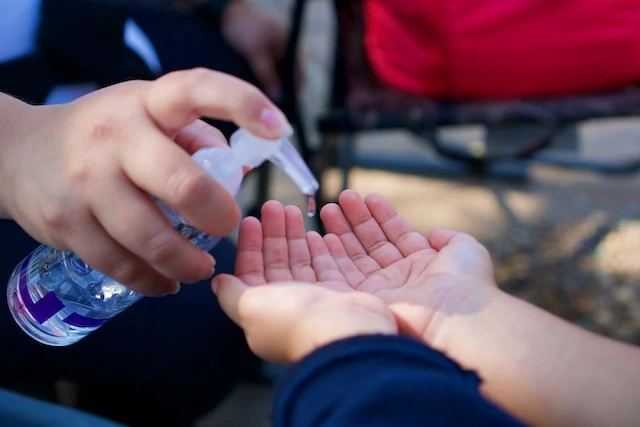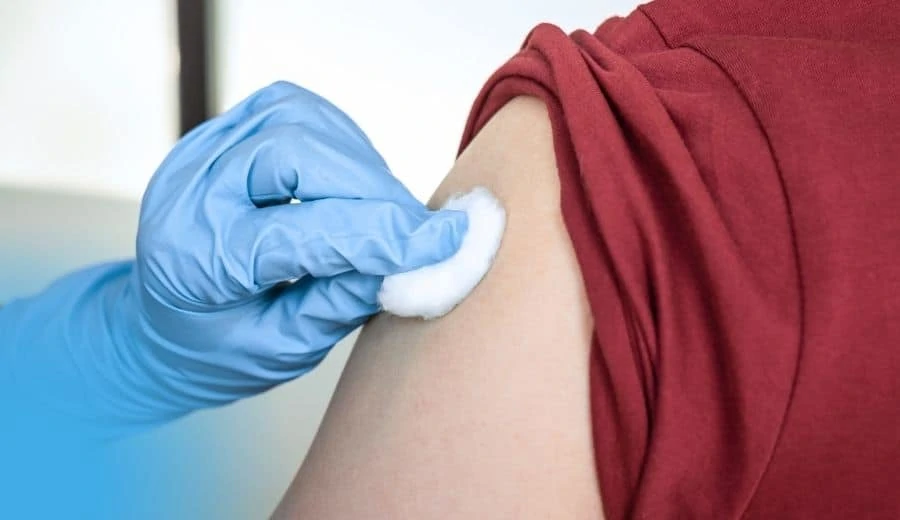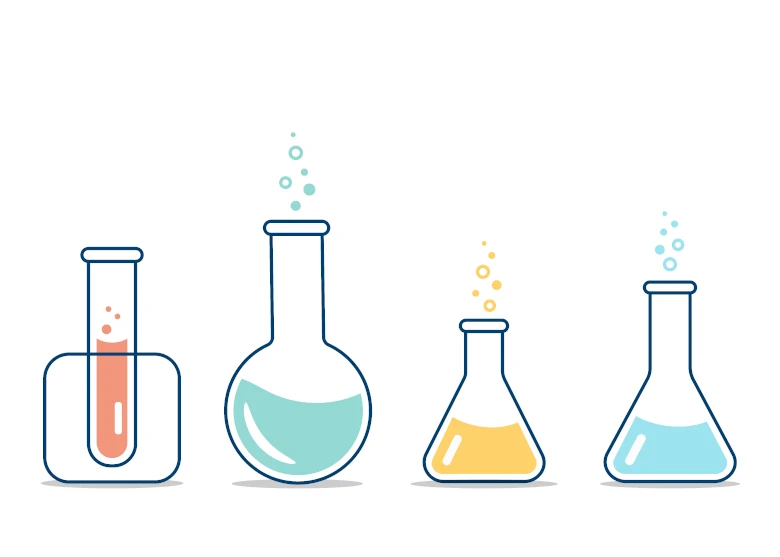Alcohols
In this article, we will cover the topic on Alcohols. These are the following learning outcomes:
- Describe alcohols as a homologous series containing the \(\mathrm{-OH}\) group.
- Name and draw the structures of the first four alcohols.
- Describe the properties of alcohols in terms of combustion and oxidation to carboxylic acids.
- Describe the formation of ethanol by the catalysed addition of steam to ethene and the fermentation of glucose.
Alcohols Homologous Series
Alcohols are a homologous series of organic compounds that have the hydroxyl \(\mathrm{(-OH\,)}\) functional group.
General formula of Alcohols:
\(\mathrm{C_nH_{2n+1}OH}\)
Are alcohols hydrocarbons?
Hydrocarbons are organic compounds that contain hydrogen and carbon atoms only. In an alcohol molecule, there are carbon, hydrogen and oxygen atoms. Hence, alcohols are not hydrocarbons as they also contain an oxygen atom.
Let’s get to know the Alcohols!
When naming the alcohols, the prefix tells us the number of carbon atoms in the molecule and the suffix tells us the homologous series the molecule belongs to. The homologous series here is alcohol, hence, the suffix is ‘\(\mathrm{-ol}\)’.
| Name | Number Of Carbon Atoms | Molecular Formula |
|---|---|---|
| methanol | 1 | \(\mathrm{CH_3OH}\) |
| ethanol | 2 | \(\mathrm{C_2H_5OH}\) |
| propanol | 3 | \(\mathrm{C_3H_7OH}\) |
| butanol | 4 | \(\mathrm{C_4H_9OH}\) |
Observe the molecular formulae of the first four alcohols in the series. Each member of the alcohol homologous series differs from the next by a \(\mathrm{-\, CH_2 \,-}\) unit.
Structural formulae of Alcohols
A structural formula shows how atoms are arranged in a molecule. It also shows the bonds between the atoms in a molecule.
The table below shows the structural formulae of the first four alcohols in the homologous series.
* The structural formula can also be displayed in a condensed manner. For instance, the condensed formula of ethanol can be written as \(\mathrm{CH_3CH_2OH}\). The condensed formula of propanol can be written as \(\mathrm{CH_3CH_2CH_2OH}\) while that of butanol can be written as \(\mathrm{CH_3CH_2CH_2CH_2OH}\).
Question 1:
Which bonds is/are present in the methanol?
- C-C
- C-H
- C-O
- C=O
- I and II only
- II and III only
- I, II and IV only
- All of the above
Solution:
B) II and III only
Explanation:
Referring to the structure of methanol above, there are only \(\mathrm{C-H}\) bond and \(\mathrm{C-O}\) bond.
Physical properties of Alcohols
Alcohols are volatile liquids at room temperature and pressure. They are liquids that evaporate quickly at room temperature.
|
|
The table below shows the solubilities and boiling points of the first four alcohols in the homologous series.
| Alcohols | Solubility In Water | Boiling Point / oC |
|---|---|---|
| methanol | very soluble | 65 |
| ethanol | very soluble | 78 |
| propanol | soluble | 97 |
| butanol | slightly soluble | 118 |
As the molecular size increases,
- solubility decreases.
- boiling point increases.
As the molecular size of the alcohol increases, the intermolecular forces of attraction between the alcohol molecules also increase. Hence, more energy is required to overcome the forces of attraction. Thus, boiling point increases with increasing molecular size.
Question 2:
Which of the following correctly describes alcohols?
- Alcohols are unsaturated hydrocarbons.
- The boiling points of alcohols increases down the homologous series.
- The general formula of alcohols is \(\mathrm{C_nH_{2n+2}OH}\).
- The solubility of alcohols increases down the homologous series.
Solution:
B) The boiling points of alcohols increases down the homologous series.
Explanation:
Alcohols do not have \(\mathrm{C=C}\) double covalent bonds and as they contain oxygen atom in their molecules, they are hydrocarbons.
The general formula of alcohols is \(\mathrm{C_nH_{2n+1}OH}\).
The solubility of alcohols decreases down the homologous series.
Question 3:
A series of chemical reactions was carried out to form ethanol.
C4H10 \(\xrightarrow[\quad]{}\) C2H4 + C2H6
C2H4 + H2O \(\xrightarrow[\quad]{}\) C2H5OH
C2H5OH + 3O2 \(\xrightarrow[\quad]{}\) 2CO2 + 3H2O
How many homologous series are present based on the substances in the reactions shown above?
- 1
- 2
- 3
- 4
Solution:
C) 3
Explanation:
Members of the same homologous series have the same general formula.
Alkanes have the general formula \(\mathrm{C_nH_{2n+2}}\). Hence, \(\mathrm{C_4H_{10}}\) and \(\mathrm{C_2H_6}\) are alkanes.
Alkenes have the general formula \(\mathrm{C_nH_{2n}}\). Hence, \(\mathrm{C_2H_{4}}\) is an alkene.
Alcohols have the general formula \(\mathrm{C_nH_{2n+1}OH}\). Hence, \(\mathrm{C_2H_5OH}\) is an alcohol.
Chemical properties of Alcohols
Alcohols undergo combustion and oxidation reactions.
Combustion
Alcohols burn in excess oxygen to produce carbon dioxide and water vapour.
For example:
When propanol burns in excess oxygen, carbon dioxide and water vapour will be produced.
Word Equation
propanol + oxygen \(\xrightarrow[\quad]{}\) carbon dioxide + water vapour
Chemical Equation
2C3H7OH + 9O2 \(\xrightarrow[\quad]{}\) 6CO2 + 8H2O
Oxidation
An alcohol undergoes oxidation when heated with an oxidising agent such as acidified potassium manganate(VII), to produce carboxylic acid and water.
When the mixture of acidified potassium manganate(VII) and ethanol is heated, the vapour of ethanoic acid is formed. The cold water is used to condense the vapour into liquid.
ethanol + oxygen from oxidising agent \(\xrightarrow[\quad]{}\) ethanoic acid + water
C2H5OH + 2[O] \(\xrightarrow[\quad]{}\) CH3COOH + H2O
* \(\mathrm{[O]}\) is used to represent the oxygen from the oxidising agent.
* The alcohol gains 1 \(\mathrm{O}\) atom and loses 2 \(\mathrm{H}\) atoms to form the functional group \(\mathrm{(-COOH)}\) of carboxylic acid.
The oxidation process can also be caused by atmospheric oxygen. The bacteria in the air uses the atmospheric oxygen to cause the oxidation of ethanol.
Example 1:
Lavandulol is found in lavender plants. The structural formula of lavandulol is as shown below.
Lavandulol can be oxidised by heating with acidified potassium manganate(VII). Draw the structural formula of the organic product formed.
Solution :
Question 4:
Which colour change is observed when ethanol is oxidised by hot acidified potassium manganate(VII)?
- colourless to purple
- green to orange
- orange to green
- purple to colourless
Solution:
D) purple to colourless
Explanation:
Acidified potassium manganate(VII) acts as an oxidising agent to oxidise ethanol to ethanoic acid. It is reduced in the process. The manganate(VII) ion is reduced to the manganese(II) ion. Thus, it changes colour from purple to colourless.
Producing Ethanol from Ethene
Ethanol is produced industrially by the catalytic addition of steam to ethene.
The conditions for this reaction are:
Temperature : 300\(^{\circ}\)C
Pressure : 60 atm
Catalyst : phosphoric(V) acid
Producing Ethanol by fermentation
Fermentation is a chemical process in which micro-organisms such as yeast act on sugars in the absence of oxygen to produce ethanol and carbon dioxide.
In the above setup, the glucose solution is mixed with yeast in a flask. The mixture is kept at a temperature of about 37\(^{\circ}\)C. This is because the enzymes in yeast work best at this temperature. When the temperature is above 37\(^{\circ}\)C, the enzymes will be denatured, so the yeast are not able to carry out fermentation efficiently. When the temperature is below 37\(^{\circ}\)C, the enzymes will be inactive to carry out fermentation.
Other than an optimum temperature of 37\(^{\circ}\)C, it is also important to carry out fermentation in the absence of oxygen.
Why must fermentation be carried out in the absence of oxygen?
If oxygen is present in the process of fermentation, then the bacteria in the air will oxidise the ethanol to ethanoic acid.
This is also the reason why alcoholic beverages (containing ethanol) turn sour if left exposed to air for a few days.
Word Equation
glucose solution \(\xrightarrow[\quad]{}\) ethanol + carbon dioxide
Chemical Equation
C6H12O6 (aq) \(\xrightarrow[\quad]{}\) 2C2H5OH (aq) + 2CO2 (g)
The fermentation process can only produce a relatively low concentration of ethanol. Why?
When the alcohol content exceeds 15% by volume, the yeast will be killed and fermentation will stop.
To obtain pure ethanol from the liquid mixture, fractional distillation will be carried out.
| Continue Learning | |
|---|---|
| Metals | Introduction to Organic Chemistry |
| Alcohols | Speed of Reaction |
| Electrolysis | Energy Changes |
| Ammonia | Alkanes |
| Alkenes | Carboxylic Acids |


 SG
SG  VN
VN 


















